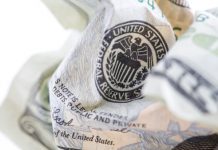Fed hints at September taper, but no promises
Overnight, the FOMC released its latest policy decision leaving rates unchanged with no change to its quantitative easing programme. Fed Chair Powell reiterated the view that inflation remains transitory and noted that although progress towards its goals had been made, it was not substantial enough as yet to look at material policy changes.
The comments were probably as much to assuage the hawks on the 18-person committee, as for the financial markets. Mr Powell did note that tapering and its timing are being discussed. We may get more signals at the August Jackson Hole Conference, and something firmer from a timetable perspective could emerge at September’s meeting. For now, though, it is business as usual.
Markets had priced in no surprises this time, and the US yield curve flattened once again, with long-dated yields set to continue easing now. The US dollar fell versus the major currency and Asian FX space as taper hedges were taken off. However, with tapering potentially starting as soon as December of this year, moving US monetary policy out of alignment with most Asian currencies, and definitely with Europe, I believe that the medium-term downside for the greenback is limited for the rest of 2021.
In other news, Chinese officials called in representatives of both local and international banks for a fireside chat about the recent education and technology sector clampdowns. From what I can ascertain, the officials went out of their way to assure the participants that the clampdowns were targeted and not part of a broader rollback of market reforms. That has taken some of the pressure off the offshore and onshore yuan’s today, although how long that will last, I am not sure.
The US Senate has made progress on the US infrastructure bill, voting to open debate on its much trimmed down USD 550 billion-odd total. It seems like markets don’t get out of bed for less than a trillion dollars these days, though, and for now, the whole process seems to have faded into the background consciousness of the financial sector.
Equity markets in Singapore received a boost yesterday, with the MAS signalling that local banks can resume full dividends. With the major banks in Singapore well capitalised and well run and sitting in a well-run country with a vaccination programme running at breakneck speed, and sitting in the middle of Asia, which itself will eventually recover, there is a lot to like about this sector going forward, even if banking is considered boring.
Asia’s data releases today have been second-tier. Japan Stock Investment by Foreigners data covering the last two weeks indicates that plenty of international fast money has joined the Nikkei retail frenzy. Japan may well be picking up some of the flows previously destined for China. Australian Export Prices rose 13.20% QoQ for Q2 as commodity prices rallied aggressively. By contrast, Import Prices rose only 1.90%, suggesting that despite their current Covid-19 travails, the lucky country in the medium term will continue to be very lucky. Both the Australian and New Zealand dollars resumed their recoveries overnight.
Singapore and Malaysia PPI’s will also show very elevated readings later today, reflecting supply-chain bottlenecks and rising input prices. However, Covid-19 continues to hang like a dark cloud over both, particularly Malaysia, and neither data points should be market-moving.
Europe releases a swath of individual and pan-Europe confidence data today, but it will be the German Inflation Preliminary for July that will have the market’s attention. The MoM print for July is expected to rise by 0.50%, with YoY approaching 3.30%. Given the ECB appears to have moved to Japanification QE forever with monetary policy and their 2.0% inflation target, low prints by the German data is likely to have the more significant effect. Expect the euro to come under some selling pressure and for European banking stocks to edge lower in that scenario.
The US releases Advanced GDP Growth Rate QoQ this evening, which is expected to touch 8.50%, mightily impressive. The GDP Price Index is expected at 5.40%, giving transitory inflation food for thought to some. Core PCE Prices QoQ Adv Q2 (say that quickly) will also be watched closely as it is also a favoured indicator for the Fed and is expected to come in at an eye-watering 5.90%.
The data is quite backwards-looking, given it is nearly August and will lose some of its zeal. If anything, given the refusal of the US bond market to react to anything inflationary, low prints could cause a scenario similar to the German inflation outlined above. US long-dated yields could move lower again, and the US dollar may ease. On the earnings front, Amazon releases quarterly results today as well. Expect another blockbuster result but watch the statement. Facebook indicated in results overnight that a revenue plateau was approaching. Although Amazon won’t say that, if they indicate slowing future sales growth, the Nasdaq may be temporarily punished with so much good news is built into big-tech stock prices.















